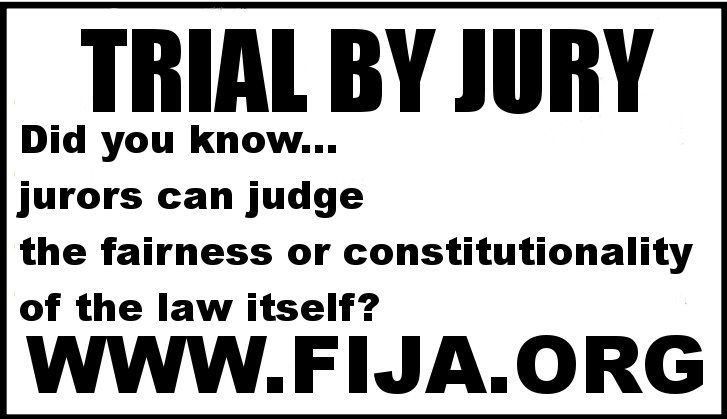I'll be posting the FEMA National Situation Updates from time to time.
See the source for today's report.
The threat level in the airline sector is High or Orange. Read more.
Homeland Security Threat Level: YELLOW (ELEVATED).
National Weather
West: A strong cold front is pushing through the region. Behind the front temperatures will drop up to 25 degrees below average and snow levels to will drop to 6,000 feet in the Colorado Rockies by tonight. Accumulations of one to two feet of snow are possible forecast at elevations above 8,000 feet in northern Utah by tomorrow. Sustained winds of 15 to 30 mph with gusts over 50 mph are likely from Montana to Arizona. The winds will contribute to critical fire weather across the southern half of the region.
Midwest: The Plains however will heat up due to southerly winds which will also transport Gulf of Mexico moisture into the region. The frontal system dropping out of out of the Rockies today combined with the moisture from the Gulf will produce severe thunderstorms (gusty winds, large hail and even tornadoes) in the central Plains. Severe thunderstorms could develop in western Kansas and spread east-northeast into Iowa and Missouri.
South: Under high pressure most of the region will be cool and dry. The frontal boundary across southern Florida will produce a few thunderstorms and moisture flowing off the Gulf of Mexico into Texas will also produce thunderstorm activity. Fire danger will remain high over northern Florida due to low humidity levels.
Northeast: The circulation on the backside of a low over Eastern Canada will produce cool temperatures and scattered precipitation. Most of the precipitation will be in the higher elevations of New York, western Pennsylvania, and northern New England. (NOAA's National Weather Service, Various Media Sources)
Tsunami Strikes American Samoa
- A magnitude 8.0 earthquake struck at 1:48 pm EDT Tuesday, Sep 29, 2009 approximately 140 miles southwest of American Samoa.
- Capitol city of Pago Pago hit with significant tsunami wash of 5.1 feet with lower heights seen elsewhere.
- Western District of American Samoa is without power--estimated at a minimum of 30 days to repair. More than half of the Eastern District is without water and power.
- Fatalities and injuries have been reported.
- LBJ Hospital has power and water and is operational.
- Significant damage to infrastructure including power, water, and industry. Total extent unknown-on-the-ground assessment on-going.
- Road washouts and debris are prevalent. The bridge leading to the town of Leona has been repaired and is open to emergency traffic only.
- USGS reports numerous aftershocks ranging from 4.8 to 5.8 magnitude.
- AS EOC reports 15 shelters open, and 2,690 displaced persons.
- Damage assessments are currently being completed.
- The seaport at Pago Pago is operational. The USN is sending the USS Ingraham to provide as-needed support-arrival time estimated at 1900 local time 30Sep09.
- Main airport on American Samoa reported by the FAA to be cleared of debris with both runways operational.
- Hawaiian Airlines is planning a humanitarian flight coordinated with American Samoa later on 30Sep09 (tentative 1500PST). (Region IX Spotrep, USGS)
Federal Response
Region IX:
Region IX:
- RRCC at Level 1 (24/7) with all ESFs
- A modified IMAT (White Team) is deploying to American Samoa at approximately 0600 PDT, Wednesday, 30 September, 2009.
FEMA Headquarters:
- FEMA NRCC is at Level 1 (24/7) with selected Emergency Support Functions (Region IX, FEMA HQ)
Tropical Storm 18W
4:00 am (EDT) the remnants of TS 18W were located approximately 63 miles west-northwest of Guam, tracking west-northwestward at 21 knots over the past six hours. TD 18W has completely dissipated as it crossed over Guam, degenerating into linear convergence. The energy associated with this system will continue to track west-northwest towards Typhoon 19W (Parma) and will eventually be absorbed. This was the final warning on this system by the Joint Typhoon Warning Center.
Guam is back to Condition of Readiness (COR) 4. COR 4 (normal day to day activities).
Guam is back to Condition of Readiness (COR) 4. COR 4 (normal day to day activities).
Federal Response:
Region IX
A modified IMAT (Blue Team) is deploying to Guam on Thursday, 1 October.
RIX LNO deployed to Guam OCD in response to TD 18W. Small IMAT team to deploy to Guam OCD in response to TD 18W. IMAT team will arrive today.
Region has three personnel in place with Guam Office of Civil Defense with MERS Commo and IT support en route.
Region IX
A modified IMAT (Blue Team) is deploying to Guam on Thursday, 1 October.
RIX LNO deployed to Guam OCD in response to TD 18W. Small IMAT team to deploy to Guam OCD in response to TD 18W. IMAT team will arrive today.
Region has three personnel in place with Guam Office of Civil Defense with MERS Commo and IT support en route.
Tsunamis
The National Oceanic and Atmospheric Administration says that tsunamis are generated when there is any large, impulsive displacement of the sea level. They can also be triggered by landslides into or under the water surface, or by volcanic activity and meteorite impacts. Tsunamis can range in size from a few inches to more than 100 feet.
Largest Tsunami in Recorded History
July 9, 1958: Regarded as the largest recorded in modern times, the tsunami in Lituya Bay, Alaska, was caused by a landslide triggered by an 8.3 magnitude earthquake. Waves reached a height of 1,720 feet in the bay, but the tsunami did not cause much damage. It sank a single boat, killing two fishermen.
Deadliest Tsunami in Recorded History
In 2004 nearly 230,000 people in 11 countries were killed in a series of tsunamis that struck after an earthquake in the Indian Ocean . Indonesia, Sri Lanka, India and Thailand were among the hardest hit. The estimated 9.0 quake was one of the largest quakes recorded on a seismograph. The tsunami traveled as far as 3,000 miles to Africa with enough force to kill people and destroy property. Media reports put the size of the waves as high as 50 feet. (NOAA, USGS)
Largest Tsunami in Recorded History
July 9, 1958: Regarded as the largest recorded in modern times, the tsunami in Lituya Bay, Alaska, was caused by a landslide triggered by an 8.3 magnitude earthquake. Waves reached a height of 1,720 feet in the bay, but the tsunami did not cause much damage. It sank a single boat, killing two fishermen.
Deadliest Tsunami in Recorded History
In 2004 nearly 230,000 people in 11 countries were killed in a series of tsunamis that struck after an earthquake in the Indian Ocean . Indonesia, Sri Lanka, India and Thailand were among the hardest hit. The estimated 9.0 quake was one of the largest quakes recorded on a seismograph. The tsunami traveled as far as 3,000 miles to Africa with enough force to kill people and destroy property. Media reports put the size of the waves as high as 50 feet. (NOAA, USGS)
Southeast Flooding
Current Situation
- Recovery efforts in the Atlanta metro area continue.
Federal Response
HQ FEMA:
- FEMA NRCC is at Level 1 (24/7) with selected Emergency Support Functions due to the tsunami in American Samoa.
- The NRCC continues to monitor the situation.
FEMA Region IV:
- RRCC Status: Level III from 7:00 a.m. - 7:00 p.m. EDT. The Watch Unit is at 24/7
- Region IV has seven (7) LNO's in the GEMA EOC; FCO, Dep. FCO, Operations Chief, IA, PDA coordinator, PA and SBA.
- Joint FEMA, GEMA and local government officials continue conducting preliminary damage assessments.
- PA PDAs have been completed in 15 counties.
- PA PDA Teams will assed five counties yesterday.
- Partial PA PDAs have occurred in two Counties.
- Disaster Recovery Centers:
DRC Intake Services Delivered
Cobb County 374 952
Cherokee County 80 438
Douglas County (Fixed) 82 304
Douglas County (Mobile) 302 324
Joint Field Office:
The FEMA-1858-DR-GA JFO, will be located at: 4360 North East Expressway, Atlanta, Georgia 30340
Critical Infrastructure (CI) Key Resources (KR)
Georgia
- Wastewater:
o The influent pump stations for Heard County and the two Douglasville-Douglas County Wastewater Systems were damaged by the flood and the plants are out of service.
o Trion's wastewater treatment plant's sludge handling facilities were damaged. The plant is still in operation.
State and Local Agencies
Georgia:
Georgia:
- The State Emergency Operations Center is activated to Level II.
- Fatalities Reported To Date: 9 Fatalities in total
- Injuries Reported To Date: None Reported
- Shelters: 173 Total Residents Remain in 3 Shelters (ARC)
Fire Management Assistance Grant (FMAG)
No activity (FEMA HQ)
Tropical Weather Outlook
Atlantic
Tropical cyclone formation is not expected during the next 48 hours.
Eastern Pacific
A broad area of low pressure located a few hundred miles south-southwest of the southern tip of Baja California continues to produce a large area of disorganized showers and thunderstorms. Conditions appear favorable for gradual development of this system during the next day or so as it moves west-northwestward around 10 mph. There is a medium chance (30 to 50 percent) of this system becoming a tropical cyclone during the next 48 hours.
Central Pacific
No tropical cyclones are expected through Thursday afternoon.
Western Pacific
Tropical Storm 20W (Melor)
At 5:00 am EDT the center of Tropical Storm 20W (Melor) was 650 miles east of Guam. Moving northwest at 16 mph. A decrease in forward speed is expected during the next 24 hours. Maximum sustained winds are 50 mph. TS 20W is expected to intensify throughout the forecast period. Tropical storm force winds extend outward up to 60 miles from the center.
Based on the current warning this system will be at typhoon strength and pass just north of the island of Rota early Saturday morning (EDT) Oct 3, 2009.
Typhoon 19W (Parma)
Typhoon 19W (Parma) is not expected to affect U.S. Territories. (NOAA, HPC, National Hurricane Center, Central Pacific Hurricane Center and the Joint Typhoon Warning Center)
Tropical cyclone formation is not expected during the next 48 hours.
Eastern Pacific
A broad area of low pressure located a few hundred miles south-southwest of the southern tip of Baja California continues to produce a large area of disorganized showers and thunderstorms. Conditions appear favorable for gradual development of this system during the next day or so as it moves west-northwestward around 10 mph. There is a medium chance (30 to 50 percent) of this system becoming a tropical cyclone during the next 48 hours.
Central Pacific
No tropical cyclones are expected through Thursday afternoon.
Western Pacific
Tropical Storm 20W (Melor)
At 5:00 am EDT the center of Tropical Storm 20W (Melor) was 650 miles east of Guam. Moving northwest at 16 mph. A decrease in forward speed is expected during the next 24 hours. Maximum sustained winds are 50 mph. TS 20W is expected to intensify throughout the forecast period. Tropical storm force winds extend outward up to 60 miles from the center.
Based on the current warning this system will be at typhoon strength and pass just north of the island of Rota early Saturday morning (EDT) Oct 3, 2009.
Typhoon 19W (Parma)
Typhoon 19W (Parma) is not expected to affect U.S. Territories. (NOAA, HPC, National Hurricane Center, Central Pacific Hurricane Center and the Joint Typhoon Warning Center)
Earthquake Activity
No new activity (FEMA HQ)
Preliminary Damage Assessments
No new activity (FEMA HQ)
Wildfire Update
National Preparedness Level: 2
National Fire Activity as of Tuesday, September 29, 2009:
National Fire Activity as of Tuesday, September 29, 2009:
- Initial attack activity: Light (84 new fires)
- New large fires: 2
- Large fires contained: 2
- Uncontained large fires: 8
- States affected: CA, OR, MT, WY, ID, and NV (NIFC)
Disaster Declaration Activity
On September 29, 2009, FEMA-1859-DR was declared for American Samoa as a result of Earthquake, Tsunami and Flooding that occurred September 29, 2009 and continuing. Individual Assistance, Public Assistance (Categories A and B), and Hazard Mitigation for all islands in the Territory of American Samoa have been authorized. The FCO will be Kenneth Tingman. (FEMA HQ)































0 comments :
Post a Comment